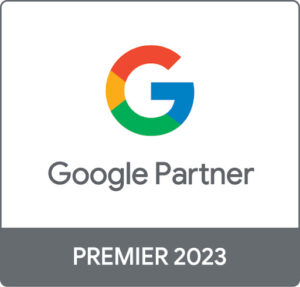The Ultimate Guide for Writing SEO-Friendly Blog Posts
Sit down, put your seatbelt on, and grab a coffee because this one’s a biggie (or, you could just bookmark this page, save it for later and come back when you’re ready).
Here we go…
1. Blog Post Length
400 – 600 words should be the minimum amount of words you should aim for when writing blog posts, I’d say a good range to aim for would be 800 – 1,200, depending on the topic.
This gives search engines like Google enough copy to crawl and, therefore, understand your article’s context. If Google knows what your blog is about then it will be able to index it for the right keywords (if you have researched them properly).
If you’re struggling to write at least 400 words on your blog’s topic, then you clearly haven’t thought it through, and should refrain from publishing until well-planned, comprehensive article structure that gives value to your audience.
Cap your posts to 3,500 words – patience is short online, and so anything above that should be split into a series of articles or converted into another resource like an ebook or a podcast.
Editor’s note: I appreciate the hypocrisy of suggesting 800 – 1,200 word articles for blog posts when I’ve gone and written this 3,500 word monster.
2. Media – Graphics, Images, Video, Audio, etc.
Images, illustrations, and videos break up long walls of text, which makes reading blog posts on all devices a lot easier and helps to illustrate the key points you are making.
Always include at least 1 media type with every blog post that you publish and more if you can. Infographics, videos, illustrations, and images are all excellent visual supplements that memorable, shareable and easy to digest.
Media files are also a great opportunity to tag keywords (Google’s image and video results) and contribute to Google’s ‘Vertical Search’ results (search results with different media types for a keyword query).
Pro Tip: Why not record an audio version of your blog for those that link to listen on the move?
Ps. I didn’t use graphics or pictures to back-up my point (and I couldn’t think of a good one to use..)
3. Optimise all Meta Data
One of the longest running tips in the SEO playbook is optimising your Meta Tags; particularly the Page Title and Meta Description. Primarily these tags should be written for your audience to encourage click-throughs from the SERPs.
Well-optimised Meta Tags should:
- Inform search engines and users what your blog post is about.
- Tell your audience why they should click through to read your post.
- Make use of your primary keywords in a natural way.
Pro Tip: Google will display the first 55 – 65 characters of a Page Title, so be sure to keep them the correct length. In the same vein, Meta Descriptions should be kept to a maximum length of 160 characters.
4. Encourage Social Sharing
What’s a blog post without any views? I don’t need to emphasise the impact social media can have on your digital marketing efforts. By now you should be (at the very least) sharing your blogs via your brand’s social media channels, ideally Facebook, Twitter, Google+ (still important for Google, sigh…), LinkedIn, Reddit and (possibly) Pinterest.
So think of it this way, you’ve written a fantastic blog post with lots of images, videos, citations, and really forward-thinking concepts. Good job! But, where do you go from here? How long will it take for your blog to start receiving traffic from organic search?
Well, search engines rely on social signals (like shares, likes, comments, views, impressions, etc.) to deliver the best results to their searchers. The stronger the signals from social media, the greater authority and importance search engines will attribute to your blog post.
But, guess what? Visitors also use social signals to determine whether or not your blog is worth reading. We place irrational value on social proofing (the more people like it, the better it must be!), so showing-off how popular your post is via social signals helps people decide on whether or not they’d like to invest the time reading it.
If your post has been shared many times, you need to shout about it!
For these reasons, it’s so important that you highlight social sharing across all blog posts – ask your audience to share if they liked your post. Or, incentivise your audience to share your content by offering an exchange; you scratch my back, I’ll scratch yours…
5. (Don’t forget to) Share your own too…
Without a doubt, the best way to reach out to a relevant audience immediately is to share your blog posts on social media, especially if you already have a strong following.
It can take some time for your blog to get indexed and ranked by search engines, so your best bet for instant results is to share your post far and wide, hashtagging it to high hell (not really … well, sort of).
I’ve already mentioned the power of encouraging others to share your content, but your first action should be to share and re-share your own. Don’t just share your blog post once and forget about it, great blog posts can be re-shared over time – particularly if you can tie your post into trending topics.
6. Use Categories and Tags
I love a well-organised blog. I’d like to think we all do. If you use WordPress or any other blogging platform with an inbuilt category framework, I suggest you make good use of it!
Making the most of your blog’s categories and tags helps both search engines and readers, but keep these few tips in mind:
- Use categories for your blog’s main themes and tags for sub-themes.
- Categories and tags should be built around keywords where possible.
- Each post you publish should be filed into at least 3 categories.
- Don’t over tag your posts – max should be 8 tags per post, at least 3.
- Keep it simple but logical, always keep your audience in mind.
7. Research Keywords and Customer Intent
Always write exclusively for your audience and use keyword research as a tool to identify what they’re asking Google.
There have been loads of experiments in the SEO world on keyword density. Mostly, SEOs were trying to find the perfect keyword density level for a particular page to get it to rank without a ‘keyword stuffing’ penalty.
I find that by writing without keywords in mind works best. Yes, you should still research your keywords before writing your blog – but use your findings to support your writing, not dictate it.
The number one rule when we’re writing articles at Seed is to identify what our audience is looking for in Google and then serve it to them in the easiest and most digestible way possible.
By thinking about your reader’s intent for their keyword queries, you will produce content for them that is more likely to get shared, and more likely to keep them engaged and on your site.
Pro SEO Tip: Make sure your targeted keywords appear within your post’s URL, Page Title, Meta Description, H Elements, anchor text links, Alt image tags, bolded and subtly emphasised within your body copy.
8. Utilise the Power of Lead Magnets (Or Not?)
A Lead Magnet is basically a bribe offering something valuable (usually a resource) to a prospect in exchange for something (usually contact information).
The idea is that you give an incredible resource away for free, like our awesome content marketing periodic table, but it’s not actually free, is it? To get it, they have to give an email address or subscribe to a newsletter.
Sounds fair, right?
Side note: our ultimate content marketing periodic table is actually 100% free with no sneaky Lead Magnets.
I’m a bit on the fence about Lead Magnets. The marketer in me says ‘YES!’, but the human in me says ‘NO!’.
While I know how effective lead magnets can be to generating actions from users, when I come across lead magnets in my real life – they really annoy me, and I’m sure I’m not alone here!
But, that said, why should you always be tied to giving something away for free? If somebody has found your resources useful then surely they’re obliged to at least exchange contact details?
I’ll leave this one in your hands – Lead Magnets are powerful, but they have their risks too!
9. Thinking about Long-tail Keywords
If you’re writing your blog posts with keyword themes in mind and not awkwardly stuffing exact match keyphrases into your copy, then you’re on the right path.
Longer keywords won’t get searched as often as the single-word, broader phrases – but don’t let that put you off. These long-tail keyword queries are always way more relevant to the searchers, and usually much easier to rank for.
Longer phrases, like questions, are used by searchers that are looking for deeper, detailed information about a particular topic – which makes long-tail keyword phrases perfect for blog posts.
10. Include Authorship
About 3-4 years ago, the big thing in SEO was Google’s authorship in web search. This meant linking your authorship profile with your Google+ account so that your little face showed up next to your blogs in the SERPs.
Sounds cool, right? Well, it was a nice idea, but it didn’t actually work.
Authorship was super temperamental and ended up frustrating a lot of web marketers. Then, all of a sudden and once people started to get it to work, Google randomly dropped displaying authorship in the SERPs altogether. Yay!
However, authorship is still important, and you should make your profile abundantly clear on each of your blogs.Why you ask? Well, because people might like to follow you, or subscribe to your blog! Don’t be invisible – make it easy for your readers to know who you are and what you’re about.
Why you ask? Well, because people might like to follow you, or subscribe to your blog! Don’t be invisible – make it easy for your readers to know who you are and what you’re about.
11. Related Reading
Including related blog posts has two benefits;
- Google rewards sites with better rankings if they retain their traffic.
- The longer a user spends on your site, the more qualified they are to becoming a lead.
When a searcher clicks on your blog post from a Google search, Google follows and tracks their subsequent behavior on your site. If they land on your post and bounce straight off, that suggests to Google that the searcher hasn’t found what they were looking for and, therefore, your post wasn’t useful for their keyword query.
On the flipside, if they land on your blog post from a Google search and spend 5 minutes on your site with multiple pages views, this suggests to Google that they did find what they were looking for, and your blog post helped them. If this happens a lot over time, Google will reward your post with higher organic rankings.
A general rule of thumb with SEO is to help your visitors. As long as your related blog posts are relevant and help users crawl around your site you should include them.
12. Link to Helpful Resources and Authoritative External Sites
Linking to reliable and trustworthy sites like Google, Wikipedia, Facebook or well-known thought leaders creates a better user experience and demonstrates to Google that you are trying to help searchers.
Think of it as ‘trust by association.’ Your ultimate goal is to get Google to trust your website.
If you link to great sites and those sites link back to you, you’re in a safe neighbourhood and, therefore, you will be rewarded with better organic rankings. But if your site links to crap websites (and vice-versa) then Google will think your site is crap too.
That’s why reciprocal linking, link farms, Private Blog Networks, and spammy blog and forum comments are all such bad ideas for SEO – avoid these black hat techniques like the plague!
Think about how your outbound links will help your readers. Make sure you link to good-quality resources from reliable sources.
Include no more than 100 outbound links per page – be extra careful here as your footer may have loads of external links that you are unaware of!
13. Powerful Call-to-Actions
A great blog post doesn’t depend on the call-to-action, but it should include a powerful one that drives an action from the user – hence the name. And when you consider that 96% of all first-time visitors are not ready to buy, your blog’s CTA becomes your greatest ally.
I love the psychology behind call-to-actions. What makes a good one? What emotional triggers can you squeeze in drive more conversions? How do you frame and position your CTA? Etc. Etc.
Although not strictly a blog post, I really like Evernote’s CTA here, and there are a lot of lessons we can take from it in forming better CTAs.
The heading “Remember Everything” is memorable, fun and it gives readers an immediate understanding of Evernote’s primary purpose. The key message, though, is nailed within the value proposition below the heading. The overall design is simple, clear and visually appealing; plus the CTA buttons jump out at you.
Call-to-Actions take many forms, though, here are some ideas for nudging your readers to take action:
- Invite readers to share your post on social media if they found it useful.
- Ask your readers to follow you on social media or subscribe to your mailing list for your latest updates.
- Suggest your readers join in the debate by commenting on your post.
- Offer a free trial sign-up period.
- Download a free resource in exchange for contact information.
- Links or buttons to ‘learn more’ about your topic, products or services.
14. Link to Product and Service Pages
Linking to internal pages is an SEO factor, sure. But, most importantly, you’re helping your readers find your products and services, which will generate more leads and sales.
Of course, you have to do this with decorum. It’s no good shoving in a clumsy link to a product that has no benefit to what you’re writing about.
When linking to a product or service page ask yourself, “Does this help my reader?”. If the answer is no, you know what to do.
15. Include Rich Snippets
Using structured data to markup your content is big in the SEO world and is only getting bigger. By tagging data points within your blog, you provide Google with a better understanding of its context for display in the search results.
Rich Snippets will make your posts look more prominent against other results in the SERPs, while providing your readers with vital information to help them decided whether or not to click through to read your article.
There are different forms of structured data markup, but for blog articles, you should tag the following on-page elements:
- Article name
- Author
- Publisher
- Date published
- Featured image
- URL
- Breadcrumb trail
- Article body
- Reviewer’s rating
- Rating count
- Reading time
If you markup your blog’s structured data correctly, all of these elements can be pulled into Google’s search page listings when displaying your blog.
16. Ask Visitors to Leave Feedback
Comments and feedback on blog posts can be a powerful signal for SEO, and no I’m not talking about blog / forum linking.
Google loves fresh, user-generated content too – and that’s essentially what comments are. Check out the comments section from a popular SEO blog I read called SEO Sherpa. 118 comments, thousands of social media shares and the author replies to every single one!
How you drive comments is down to you; perhaps you ask a question at the end of your article, or ask readers to contribute their own thoughts? Or maybe your goal should be to start a debate or a discussion about your topic.
We all love to think we’re right, we all love the chance have our opinions listened to. So why not ask your readers to leave a comment?
Plus, your blogs will live on after you’ve published them – your readers will engage with you and each other, they will ask questions which you (or others) can answer.
Your blog posts become content breeding grounds, useful resources, attracting links from others, all of which keep your content fresh and relevant.
17. Plan and Research your Blogs to Inform your Audience
I’m going to assume that your ultimate desire is to become a thought leader within your industry and inspire your audience (hey, why not?).
One of the greatest tools we have, but use less and less, is feedback from our audience and customers. What I mean by this is basically asking them what they want to know, and how you can help them.
Keyword research, to an extent, allows you to gain insight into the types of topics your potential audience are asking Google. But what’s more powerful is simply asking your existing audience what they’d like to know, and how you can help them make qualified decisions about what you offer.
Say, for example, you owned an online roofing supplies store (see what I did there?) selling all kinds of roof tiles and other roofing materials. We all need a roof, but I’m going to hazard a guess that most of us don’t know the first thing about buying roof tiles?
Ah, there’s a blogging opportunity!
How about you create a blog series that explains the benefits, differences and specific uses of your range of roof tiles in a digestible format? Trawling through pages and pages of products is bad UX, and can often lead to choice paralysis. I just want some roof tiles!
If structured well and categorised in an easy-to-find way, your product information resource could be a difference-maker!
18. Using H Elements for Skim Readers
I like blog posts that make great use of H Elements. Before I invest time into reading an article (and I don’t know the author), I skim read the content for the key points. This enables me to make a decision on whether or not this article is worth investing time into.
However, I’m only able to do this is the article uses H Elements to significant effect. If not, it’s quite difficult to know whether or not what I’m about to read is for me.
As well as the obvious, there are some SEO-related rules for using H Elements too:
- All blog posts must only contain a single H1 tag, usually for the title of the post.
- H2 – H6 Tags should be used to structure your blog post to help your readers.
- Keep implementation of header tags consistent across all blog posts.
- H Tags should contain a natural use of keywords – no spam stuffing!
Please keep your H Elements consistent across your site. Having multiple layers of typography hierarchy is confusing and unattractive.
19. Design Consistency / Aesthetically Pleasing
I have a logical brain and. Therefore, I massively appreciate well-strictured blogs with a logical hierarchy, user experience, and navigation. I think most people feel like this when browsing the web, and that’s why businesses invest big money into UX and design.
But you don’t need to spend big to get a few little rules right. It’s so easy to make a blog aesthetically pleasing to read, but so many sites out there are still getting it wrong.
Two beautiful examples I’ve come across are Medium and Help Scout (an excellent blog about customer loyalty, image below). Clean, simple and consistent. No irrelevant ads, no annoying pop-ups, and nothing that draws your attention away from the content.
The spacing is perfect, the typography is consistent, the overall design and flow of content are considered and easy on the eye. Quite simply, it’s a pleasure to spend time reading.
Think of the alternative for a second. Have you clicked through to a page recently and were instantly turned off by the sheer amount of distractions and ugly layout? Yeah, me too – and it totally put me off reading the article.
Am I shallow? Probably. But it’s not hard to get these design principals right!
20. Trustworthy Elements
Finally, we come to trust. Confidence is a big thing for us, as humans, especially when seeking advice from others online. Without it, you may as well give up now.
Wikipedia suffered from a bad reputation years ago because anyone could contribute to anything, and did. The open source philosophy on Wiki was abused, and therefore, its trustworthiness took a beating.
Since then, Wikipedia has massively invested time and energy into developing their moderator’s community which has since cleaned up the site and reacquired trust with its audience.
Trust is a funny thing – anyone can publish anything on their blog, unmediated, but does that make them an authority on a subject? How can we distinguish between fact and fiction, a thought-leader and a wannabe?
Trust takes a while to build, but it’s crucial to invest in now. If Wikipedia didn’t address their trust issues a few years ago, then the site would have been rendered useless by its audience, and would have eventually failed.
How do you generate trustworthiness on your blog? I could (and probably should) write a whole article series on the effectiveness and use of trust factors in website marketing. But, for now, here are a few actionable elements you can use to get started:
- Testimonials from customers
- Reviews and visual star ratings
- Certifications within your industry
- A friendly face 🙂
- Publications you’ve been featured in
- Security badges (payment gateways, etc.)
- Trust icons and images
- Easy to find contact information
- Well-written and informative copy
- Guarantees from clients and affiliates
- Display trusted partners that you associate with
- Design consistency
- Considered UX
- Visually pleasing design
- Trustworthy language and tone of voice










